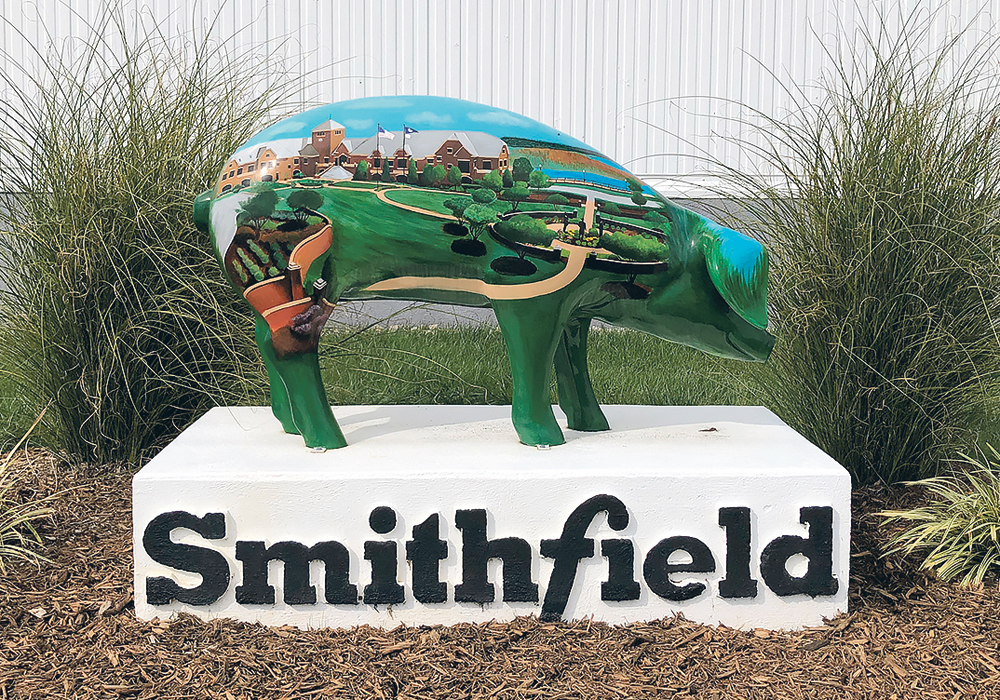Global meat industry adapting to profit from African swine fever, which has killed up to half of China’s hogs
SMITHFIELD, Virginia, (Reuters) — Smithfield Foods’ slaughterhouse in Virginia used to carve up pork for American sandwiches and holiday dinners. But workers now box up pig carcasses to ship to China, according to employees, local officials and industry sources.
The transformation at the Smithfield, Virginia, plant shows how the global meat industry is adapting to profit from African swine fever, a fatal pig disease that has killed millions of hogs in China and turned the world’s top pork consumer into a major meat importer.
Bought by China’s WH Group Ltd six years ago for US$4.7 billion, Smithfield Foods has retooled United States processing operations to direct meat to China, which produced half the world’s pork before swine fever decimated the industry.
Read Also

Farming Smarter receives financial boost from Alberta government for potato research
Farming Smarter near Lethbridge got a boost to its research equipment, thanks to the Alberta government’s increase in funding for research associations.
The world’s biggest pork processor operates a meat plant in Smithfield, Virginia, home to 8,000 as well as the company’s headquarters and a wider tourist economy built on its famous hams, bacon and sausages.
Since late spring, pigs trucked to the plant have been slaughtered and sliced into thirds for shipment to China, where Chinese workers process the carcasses further, company employees and industry sources said.
“They got an order to fill: China,” said one plant worker, who asked to remain anonymous.
Smithfield Foods declined to comment on the change or allow a reporter to visit the Virginia plant, which slaughters about 10,000 pigs a day.
The company previously said it was upgrading the facility, without giving details, and that U.S. business was a priority. Other Smithfield Foods plants in the United States have continued to slaughter pigs for the home market, industry sources said.
WH Group, known as Shuanghui International Holdings when it bought Smithfield Foods, did not respond to a request for comment.
However, Arnold Silver, Smithfield’s director of raw materials procurement, said at a recent industry conference that sales to China could eventually create bacon and ham shortages for American consumers.
The outbreak of African swine fever has killed up to half of China’s hog herd since August 2018 and pushed prices so high that Chinese importers are willing to pay hefty tariffs that Beijing imposed on U.S. pork as part of the countries’ bruising trade war.
U.S. pork producers say China’s losses from the disease have created a once-in-a-lifetime opportunity for sales.
After shifting operations, Smithfield Foods can process pigs more quickly in Virginia because employees are doing less work on each carcass, according to the plant worker. The job is still difficult, though.
“They freeze it up. It’s heavy,” said the employee, who was wearing a brace to support his back and a sweatshirt to keep warm.
The United States exported 294.5 million kilograms of pork to China between January and August, according to U.S. Census Bureau data, more than in the whole of 2018.
Frozen carcasses accounted for about 20 percent of exports by weight from January to August, up from 0.3 percent during the same period in 2017, the data show.
Smithfield Foods was the top shipper this summer, sending at least 17.6 million kilograms of pork to China between June and September, according to Panjiva, a division of S&P Global Market Intelligence. Kansas-based Seaboard Corp. sold at least 5.3 million, Panjiva said. The firm noted its data does not capture all shipments.
Seaboard did not respond to a request for comment.
“Down the road, if this continues and we ship a lot of product to China, certainly I think we could see shortages, particularly on hams and bellies,” Smithfield’s Silver told the conference.
Smithfield Foods renovated its Virginia plant to supply carcasses to China, according to a person with direct knowledge of operations who asked not to speak publicly about the changes.
“There were departments that were completely eliminated or erased or remodelled,” the person said.
Tyson Foods Inc. and JBS USA are also positioning to increase sales by stopping the use of the growth drug ractopamine, which is banned by China.
China is importing U.S. hog carcasses because it needs the entire animal, rather than specific parts, market analysts said. China has excess capacity in its processing industry due to the disease outbreak and can cut up U.S. carcasses to meet domestic tastes more cheaply than buying already-butchered pork, they said.
China’s tariffs on frozen carcasses are also 62 percent, compared with 72 percent for muscle cuts, said Erin Borror, economist for the U.S. Meat Export Federation, an industry group.
“They need to be able to run their plants and keep workers employed to the extent possible,” she said.
Smithfield Foods said it is subject to the same Chinese trade tariffs as other U.S. pork producers, despite being owned by a China-based company.
The U.S. did not export any hog carcasses to China between January and May of this year but shipped six million kilograms in June, 28 million kilograms in July and 26 million kilograms in August, U.S. Census Bureau data show.

















